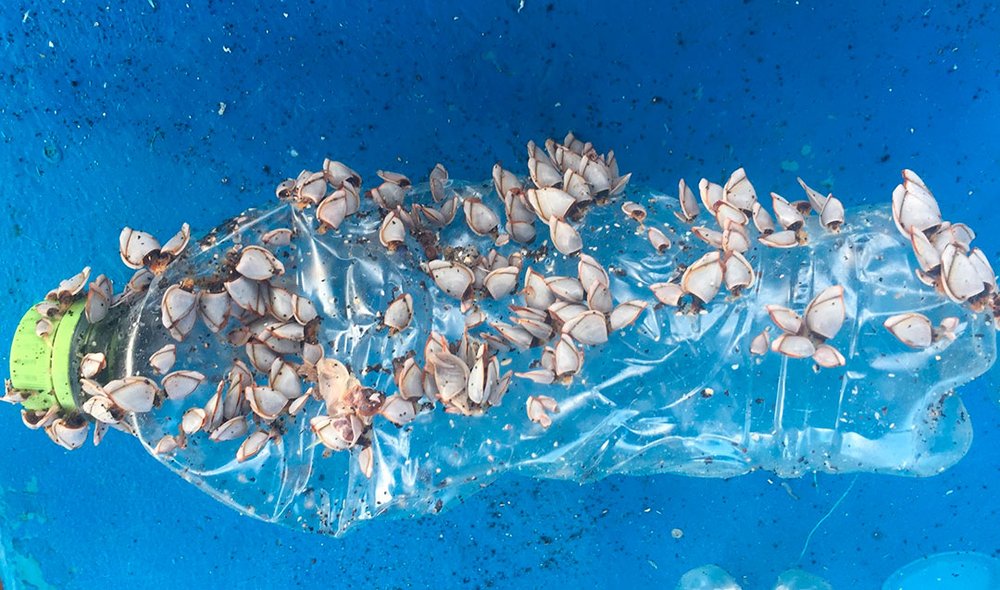
A loud bang as the generator came on, the splashing of the waves against the side of the small blue and white fishing boat, and the expedition began. A team of 15 set sail due North on the night of the 20th of February 2018. We embarked upon a Coastal Clean-up trip for a week to Genovesa, Marchena, Pinta, and Santiago Islands, under the leadership of the Galapagos National Park. What a journey of contrasting emotions it was going to be.
We arrived at the first island on the morning of the 21st; a beautiful rainbow to our right, arching over the ocean, and Genovesa in front of the bow, growing larger as we approached it. Half of the clean-up team headed to the south-eastern tip of the island and the rest of us were dropped off at the tourist site “Darwin’s Beach”. Initially we found almost no plastic but beautiful red footed booby colonies with their chicks changing feathers and sea lion groups with their playful several month-old pups playing in the tide pools. It was almost too perfect, yet it made sense.
Tourist sites are well taken care of by the Naturalist guides that go through the paths daily, yet the minute we stepped out of the well-travelled path and onto the cliffside the scenery changed. There was garbage covering the area; over the surface and trapped between the lava rocks.
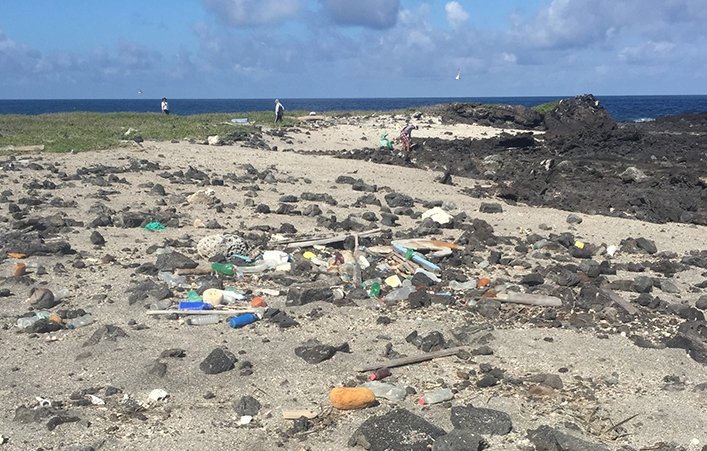
Initially we had thought we wouldn’t even fill one of the six large sacks we had been given, but only after three hours they were all full. The other team had picked up a similar amount. In the afternoon, we all headed to the third clean-up site together and took more sacks with us this time, once again, we filled them all.
The rest of the days went by in a similar manner. We walked several miles through lava fields, sandy beaches, cobbled beaches, mangrove fields; all spectacular sights, as we collected all the garbage we could find: hundreds of plastic bottles, oil containers, plastic take away containers, plastic cutlery, glass bottles, metal tanks, fishing nets and traps, and so much plastic fiber rope.
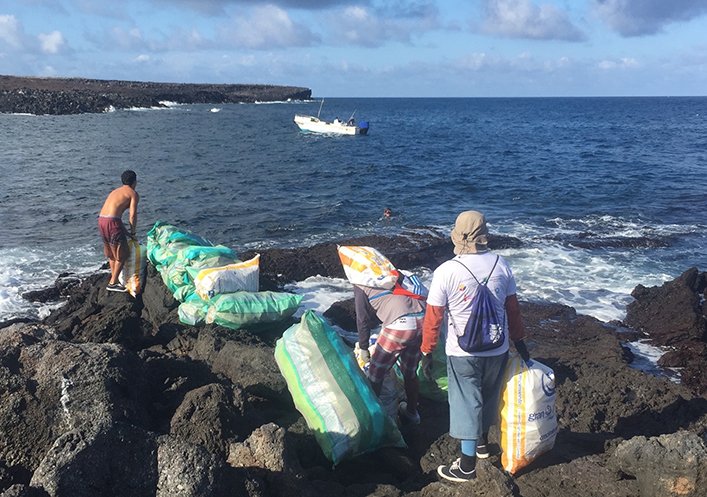
In the meantime, we were accompanied by playful bottle-nose dolphins during our arrival to Marchena Island, escorted through the ocean by several species of sharks, and kept company on land by Oyster catchers, Galapagos Hawks, marine iguanas and several colonies of Galapagos Sea Lions, always guarded by their alpha male barking at us to keep safe distance. We also found special beaches with marine iguana and green sea turtle nests which show how important the islands are for these vulnerable species.

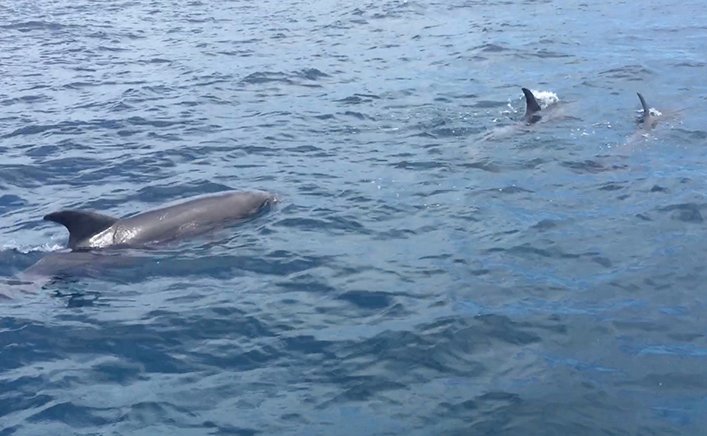

Every afternoon on the boat, the team would pour out all the sacks we had filled on the islands and we would classify them by type of plastic, record the number of each recognizable label, and weigh it all after the classification. It was exhausting, but we were always well compensated by a swim in the ocean, a delicious meal and getting to spend the night navigating the archipelago, beneath a sea of stars.
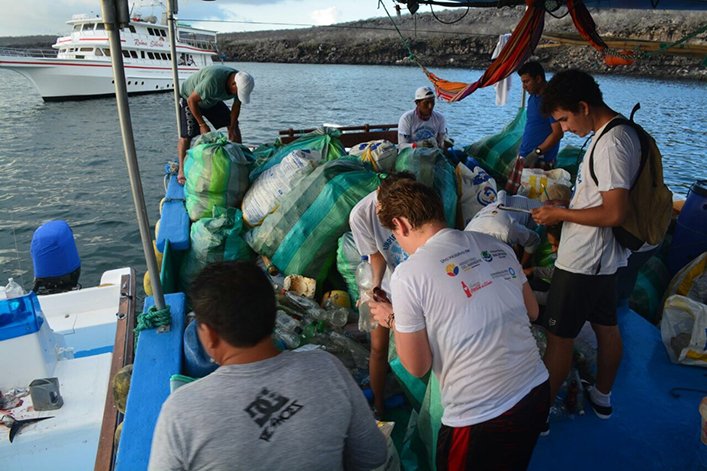
Moreover, as part of the trip we also manage to experience life on a fisherman’s boat. That meant sleeping in a small room that fit 9 people on very tight bunk beds, plus one more one the ground, it meant showering in the ocean and using the same cups we use to drink our beverages to rinse ourselves with the little bit of sweet water we had on board, brushing our teeth while admiring our surroundings (I have to say there was something very relaxing about that last bit, almost like mediation), flushing the small toilet with buckets of ocean water, and learning a lot from everyone on board. The diverse backgrounds everyone had made the experience all the better and I learned that one should never underestimate how much you can learn from a fisherman.
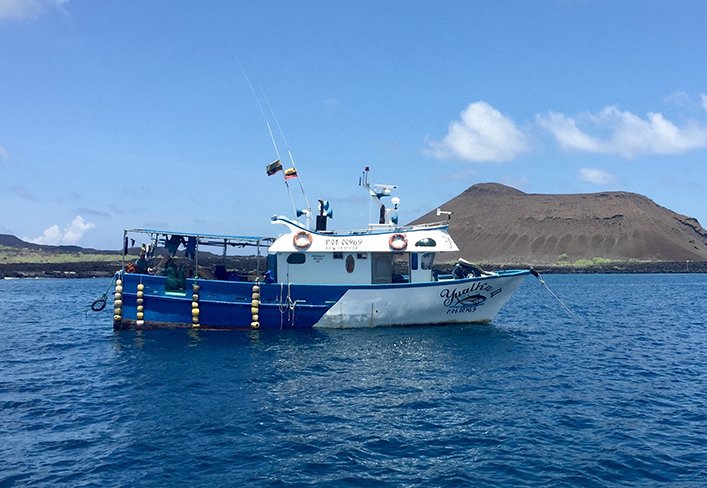
At the end of our 7 full days of coastal clean-up we had collected around 300 large sacks filled with garbage which amounted to 1.6 tons of human caused pollution. It felt like a small success, but it is not enough for us to just “pick-up” the waste we have caused. If we, as humans, don’t change our lifestyles and reduce our use of disposable plastic, we are soon going to be swimming in our own trash. We are already reaching a point where it’s too much for us to be able to “clean-up” and it is not only affecting ourselves but affecting the lives of so many marine animals and destroying beautiful areas of our planet. As Jacques-Yves Cousteau said, “Water and air, the two essential fluids on which all life depends have become global garbage cans.” Yet together can change this.
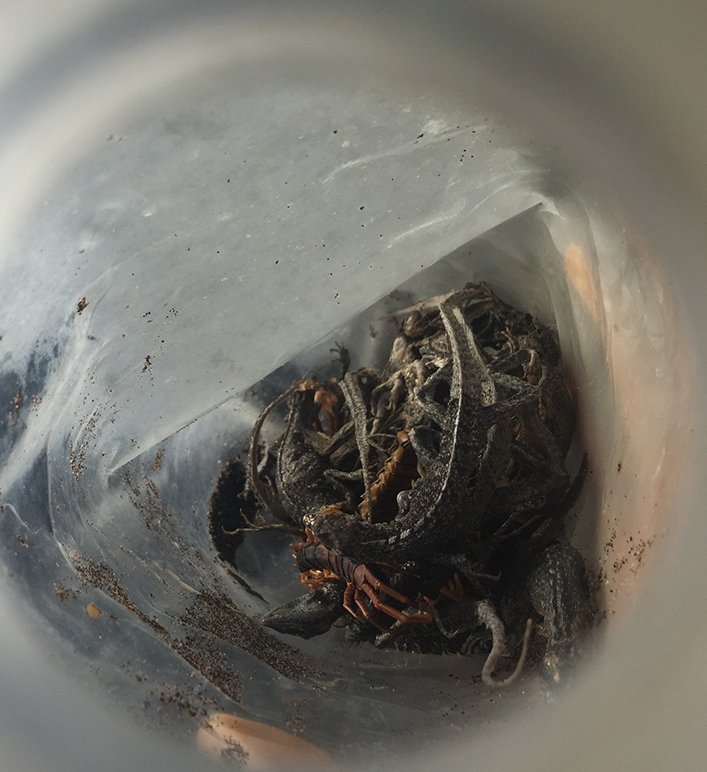
The clean-up crew was comprised of three members of the Galapagos National Park Service, two fishermen, two local municipality workers, two volunteers from the Charles Darwin Foundation (including myself), one member of Conservation International, and international exchange student from the Universidad San Francisco de Quito, and the boat team (the marine, the chef, the chief officer and the captain) made up our heterogenous group.

The Charles Darwin Foundation depends entirely upon the generosity of its supporters. Please donate today to support our research on plastic and clean-up expeditions such as these.




